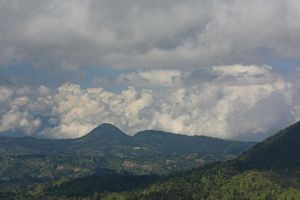
- Get to Know
- About Dominican Republic
- What to see
- What to do
- Hotels
- Santo Domingo
- Boca Chica
- South coast
- Bani
- Azua de Compostela
- Barahona
- Pedernales
- Inland Region
- Santiago de los caballeros
- Jarabacoa
- Concepción de la Vega
- Constanza
- San Francisco de Macorís
- North Coast
- MonteCristi
- Puerto Plata
- S. F. de Puerto Plata
- Sosúa
- Cabarete
- Nagua
More Offers on:Touristic Information:- Dominican Republic
- Santo Domingo
- San Pedro de Macorís
- Juan Dolio
- La Romana
- Higüey
- Punta Cana
- Playa Bávaro
- Samaná
- Hato Mayor
- Bani
- Azua
- San Cristóbal
- Barahona
- Pedernales
- Bahoruco
- San Juan de la Maguana
- Independencia
- Montecristi
- Puerto Plata
- Sosúa
- Cabarete
- Río San Juan
- Nagua
- Santiago
- Jarabacoa
- La Vega
- Constanza
- Cotuí
- Bonao
Basic Information:- Prepare your travel
- How to get
- Means of Transport
- Gastronomy
- What to See
- Beaches
- Museums
- Natural Parks
- Zoos & Aquariums
- What to do
Others:Ébano Verde Scientific Reserve, Jarabacoa
Explore the purest nature in the mountains of Ébano Verde Scientific Reserve, in the Dominican Republic
The Ébano Verde Scientific Reserve is located on the eastern massif of the Central Mountain Range of the Dominican Republic, among mountains and the townships of Jarabacoa, Constanza, Bonao and La Vega.
This reserve occupies an area of 29 km2 and has a height of between 800 and 1,565 m. Its highest point is Golondrina hill, a mountain that forms a perimeter around the reservation together with Casaíto hill, La Sal hill and La Col hill.
Due to the abundance of rains in this region, it is one of the wettest areas of the country, thus being classified as a very humid forest from low mountain.
The reserve has three watersheds, such as the Camú, Jatuley and Jimenoa rivers, whose waters supply the city of La Vega and the Tavera and Rincón dams. It also has streams that flow into the Jimenoa and Jatuley rivers, like the Arroyaso, which contains the spa of the same name.
Regarding its flora, it has 621 species of plants, of which 153 are endemic. The most characteristic endemic species is green ebony, a tree with beautiful wood which is in danger of extinction and from whose plant the reserve took its name, since it is a refuge of it. The Pinguicolacasabitoana is also important -a carnivorous plant without common name thought to be extinct until it was found in El Paseo de las Nubes (Clouds Walk) in Casabito hill-, as well as other species like the beautiful fern Palo de Viento (Wind Stick), the jaiquí, the tárana, the Creole pine, the lignum vitae, the “chicken blood”, etc.
As for its fauna, eight species of amphibians and ten of reptiles live in the reserve. Among the mammals, there are are bats and solenodons, which are endangered and unique in the Dominican Republic. And among the birds, there are parrots, parakeet, the carrao and the threatened Constanza cigüita.
On La Sal hill and Casabito hill, these plant and animal species are taken care of to ensure their survival, as they are species that only grow in the biophysical conditions offered by this scientific reserve and with the least possible human involvement.
One of the few places that you can visit is the path of Baño de Nubes (Cloud Bath). It is 1000 meters high in the Casabito hill and, from there, on clear days you can glimpse the bay of Samaná. Its name comes from the clouds that surround the place and the moisture that ascends from the valley of La Vega Real.
Several kilometers from the path of Baño de Nubes, there is the Arroyaso, to which you can arrive by walking through a well marked path. There is a research station, a school and also a spa nearby, formed by a stream that falls into small waterfalls on a large rock, creating a natural pool whose water temperature ranges about 14 °C.
The reserve is prepared for visitors, since it has well-marked paths where you can easily take a walk; it also has a Visitor centre -which is a bit run down-, a watchtower and a weather station. Inside the latter there is also a museum, where maps, photographs and miniatures of different areas of the park are exhibited.
Crowded visits are not permitted; after all, it is a Scientific Reserve.
More information:
Location:
Jarabacoa, República Dominicana.
Access:
Through the road that runs from the Duarte highway to the so-called Cruce del Abanico, north of Bonao, until reaching Constanza.
Carte Interactive:
Hotels
Book now your Hotel or Apartment:
Flight Offers:
Compare flight offers and book in advance to save some money.
Car Rental
Find the largest offer in car rental for your holidays:
Copyright www.VisitDominicanRepublic.org © - All rights reserved.



